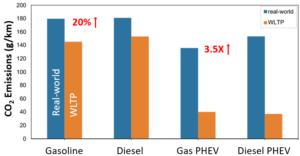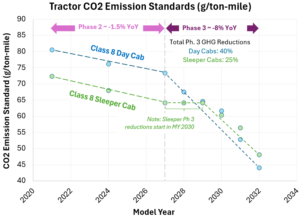Regulations
Real-world CO2 emissions from cars and vans in Europe greatly exceed WLTP values
First analysis of real-world data by the EU Commission highlights gaps between on-road and certification
Context
According to Regulation (EU) 2019/631, the EU Commission is tasked with monitoring the real-world fuel consumption from M1 (cars) and N1 (vans) vehicles, starting 2021.
For the first year, in 2021, real-world fuel consumption data was collected on cars and vans equipped with on-board fuel consumption monitoring devices (‘OBFCM devices’)
Data collected was compared with the laboratory test certification values measured on the WLTP lab certification test cycle.
Summary of the results is discussed here.
Vehicles Tested
- After filtering for outliers and vehicles with too few miles, data from 617,194 cars (7.2% of cars first registered in 2021) and 6,667 vans (0.6% of vans first registered in 2021) was analyzed.
- The cars selected included ~45% petrol, 35% diesel, and 16% petrol plug-in hybrids and 4% diesel plug-in hybrids.
- On average, the cars in the data set were found to be 7% heavier than the average new car registered in 2021, and the WLTP CO2 emissions were also found to be 6 – 8% higher than the average.
Findings
- The average real-world fuel consumption and CO2 emissions were ~ 21% higher than the corresponding WLTP values for conventional petrol and diesel cars.
- For plug-in hybrids, the real-world fuel consumption and CO2 emissions were ~ 3.5 times higher than the corresponding WLTP values, indicating that these vehicles were not charged as much as anticipated (this is addressed through the “utility factor” which is an estimate of the fraction of miles driven in all-electric mode).

What Next
The comparison of real-world emissions with the lab values will be used to make future improvements and adjustments to the WLTP, the utility factors for plug-in hybrids (already proposed for 2025), and for in-service verification. Given this is the first year, the data collected so far is insufficient to warrant changes, but it provides insights into the gaps between laboratory testing and real-world data.
Sign up here to receive such summaries and a monthly newsletter highlighting the latest developments in transport decarbonization
5-Min Monthly
Sign-up to receive newsletter via email
Thank you!
You have successfully joined our subscriber list.
Recent Posts

SAE WCX 2024 – Year in Review
The SAE World Congress was held in Detroit and covered a broad range of topics pertinent to transport decarbonization. Here’s a link to download presentations on emissions and sustainability.

Real-world CO2 emissions from cars and vans in Europe are 20% higher than certification values
EU Commission finds real-world CO2 emissions from cars and vans in Europe greatly exceed lab certification values. Plug-in hybrids are not being charged as much as estimated.

US EPA MY 2027-2032 Heavy-Duty Phase 3 GHG Standards
The U.S. EPA has finalized the Phase 3 GHG rule specifying CO2 emission reductions from heavy-duty trucks and buses over MY 2027 – 2032.
